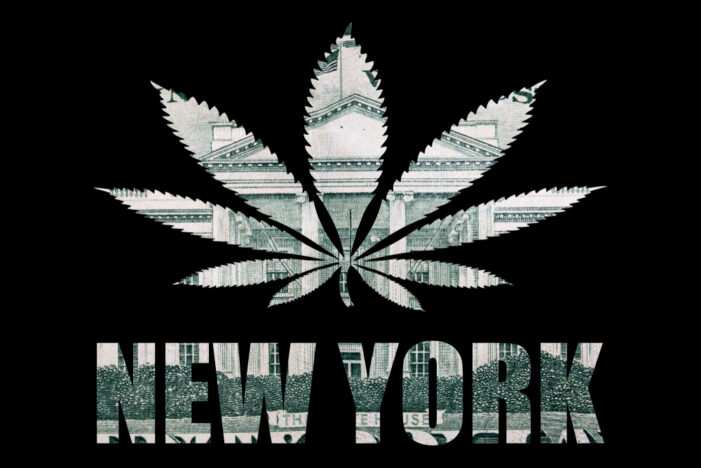By Linda Nwoke, Special to CAW
The state of New York legalized the use of recreational marijuana or cannabis for medical
purposes in 2016. Furthermore, it became legal for recreational use in 2021, and in 2022, the sale
of marijuana became legal in New York.
The relaxation of the penalties for illegal sales is aimed at creating a regulated network of
dispensaries and providing opportunities for the release of New Yorkers formerly incarcerated
for cannabis-related offenses. The two-pronged goal of decriminalizing the handling of cannabis
and generating substantial tax revenue appears to have taken a course different from the original
intent.
In present-day New York City, the cannabis landscape significantly differs from what
policymakers had envisioned by legalizing recreational cannabis use and dramatically reducing
penalties for illegal sales. This intention was to create a network of carefully located and safely
run dispensaries by people incarcerated for selling weed in the past.
Prevalence of Illicit Cannabis Market
According to a 2023 report by MDG Consulting, New York is expected to have a large cannabis
market that will make between $5 Billion – $7 Billion. In January 2023, the state issued over 280
conditional cannabis cultivation and processing licenses to existing operators. Findings show that
new retail licensees are gradually opening, with a projection of the opening of over 36
dispensaries by the end of the year.
Thus far, Legal dispensaries in the state reported sales of only $33 million in the first half of the
year, with tax revenue totaling $3.3 million per month, well below the projected $4.7 million by
the Hochul administration.
The report noted that recent media coverage in New York identified a temporary supply
extension and a winding path to market for producers as part of the sector’s challenge. Yet, the
state unnecessarily creates a retail bottleneck, slowing illicit market absorption and affecting
revenue.
Across the board, in the five boroughs, every corner of the city reeks with the smell of weed,
pointing to the fact that the product is readily available. Yet, the government isn’t collecting
much tax revenue because most of the sales occur within the thousands of unlicensed retailers,
including bodegas and delis in the city, selling cannabis extracts, flowers, and edibles.
Most of these shops operate outside the bounds of legality, significantly undermining the
emerging legal marijuana industry across the five boroughs with outlets that are more than the
number of shops selling marijuana in Amsterdam, the global capital of cannabis consumption.
Over time, New York City has become a hub for cannabis shops in the Netherlands, with the
highest number of stores selling weed.
The Debate over Unlicensed Shops
A report by Crain’s Newsletter shares that a defender of unlicensed stores from lower Manhattan,
Attorney Paula Collins, estimates the existence of more than 8,000 illegal cannabis retailers
across the city, a number that is far above the commonly cited estimate of 1,500. She reckons
that around 36,000 unlicensed retailers, wholesalers, and growers are operating across the state,
and these unlicensed shops have become a dominant force in New York’s retail landscape.
Sadly, shutting them down would lead to job losses and drive cannabis sales back underground
and dangerous, with the potential of increasing criminal activities. Although the black-market
stores threaten to suppress the growth of the legal market, the attorney argues that the stores
should be allowed to stay in business.
Enforcement and Regulation Challenges
The disparity between licensed and unlicensed cannabis shops stems from various factors. For
instance, while unlicensed shops enjoy competitive pricing, the ability to accept credit cards, and
flexible product offerings, licensed dispensaries are burdened by high upfront costs, which create
significant barriers for equity applicants and a massive hindrance to doing business.
Furthermore, the cost to set up a licensed dispensary in New York City may exceed $2 million,
which constitutes a significant hurdle for those seeking to enter the market legally. Such financial
constraints have slowed the realization of the state’s social justice goals, where the aim was to
prioritize individuals disproportionately affected by past drug laws.
Hence, despite New Yorkers’ complaints over the weed stores, the crisis appears to be gathering
momentum rather than diminishing. Recently, at a City Council hearing in June, the leader of
Times Square Alliance Group, a not-for-profit organization, Tom Harris, observed that in five
months, Times Square had gone from having two illegal weed stores to a dozen. He
recommended that law enforcement be allowed to do their job, among other things.
Although there is evidence of action against such illegal structures, such as the Manhattan
district attorney’s office ordering the owner of 11 unlicensed shops on July 15 to stop selling
cannabis and pay $400,000 in fines, such actions are deemed inadequate as the black market for
marijuana remains dominant in New York because it’s cheaper.
Slow Progress and Legal Action
As a state, New York is also beginning to take action to close unlicensed shops, with several
cease-and-desist orders issued to many retailers. However, the slow pace of justice allows many
unlicensed shops to continue operating, as they generate substantial rental income for landlords.
The situation has escalated to the point where certain sales are made from individuals’ homes and
on the streets without fear of any form of repercussion. To combat the crisis, some advocate for
increased involvement of law enforcement.
Taxation and the Competitive Edge of the Illegal Market
Despite their illegality, unlicensed shops have a notable edge over licensed dispensaries. They
often offer lower prices and accept credit cards, making them more attractive to consumers.
However, the origin and safety of black-market cannabis remain uncertain. Yet, the underground
dealers have served New Yorkers’ cannabis needs for decades, creating trust in their products,
regardless of their unverifiable origins. Legal dispensaries, on the other hand, face the challenge
of gaining consumers’ trust by offering products at a higher price point.
So, the price differences drive the disparities between the legal cannabis market and the
underground business. In a city where cannabis prices can reach $200 an ounce, confidential
prices are usually half that amount. Thus, consumer behavior plays a huge role in creating
pricing disparities.
Although most unlicensed New York smoke shops aren’t collecting the 13% tax levied on
cannabis sales, they charge the regular 8.75% sales tax rate for lighters and other non-weed
merchandise. Yet, taxes affect the price of legal cannabis, giving the illegal market a competitive
advantage.
In 2021, when New York legalized recreational cannabis, it hoped for substantial tax revenue
from legal cannabis products, including state sales and local and excise taxes. These were
expected to boost the state’s account for funding essential social programs and equity initiatives. However, reality has proven to be more complicated.
Moving on to the Next Phase
Despite the challenges, there is hope for New York’s legal cannabis market, as the state plans to
open at least ten new medical dispensaries later in 2023 to serve recreational users. Although the
road ahead may require setting social-justice-related goals, some experts predict that New York
could eventually be like California, where the legal market grew by over 40% in sales five years
after legalization and recorded an increase in dispensaries.
Those in government also hold a similar view, as the administration believes the legal cannabis
market will gain a grip over time. For instance, the over 200 new licenses recently approved are
a way to accelerate New Yorkers’ transition to the legal system.
There is hope that a combination of increased licensing and regulatory adjustments can pave the
way for a thriving legal cannabis industry in the state. Ultimately, New York’s pursuit of a
regulated cannabis market remains a work in progress, demanding continuous adaptation and
commitment to its goals.
Thus, as the cannabis market evolves, a balance must be forged between social justice, taxation,
and regulation to reach a thriving destination.






